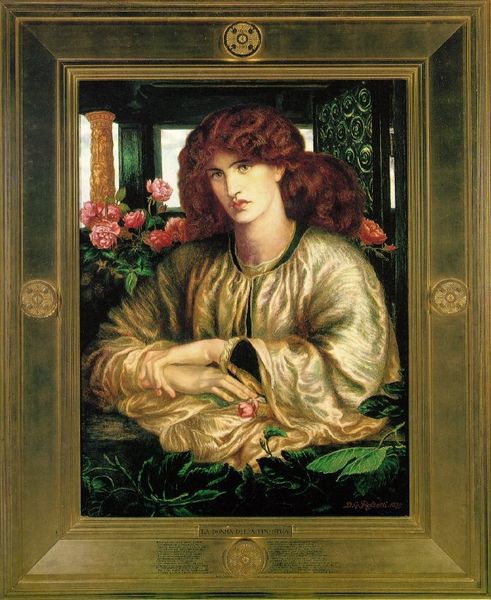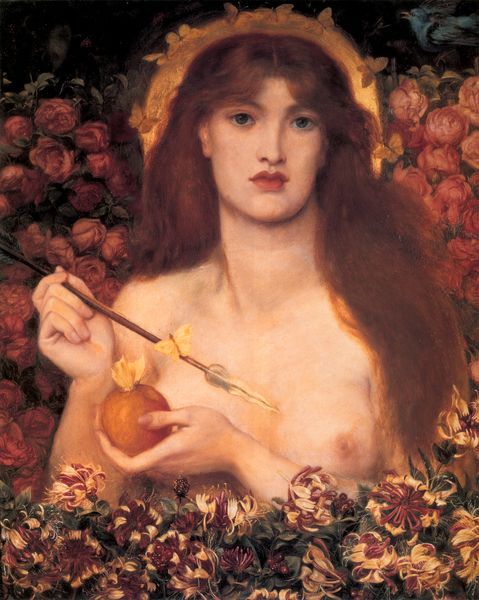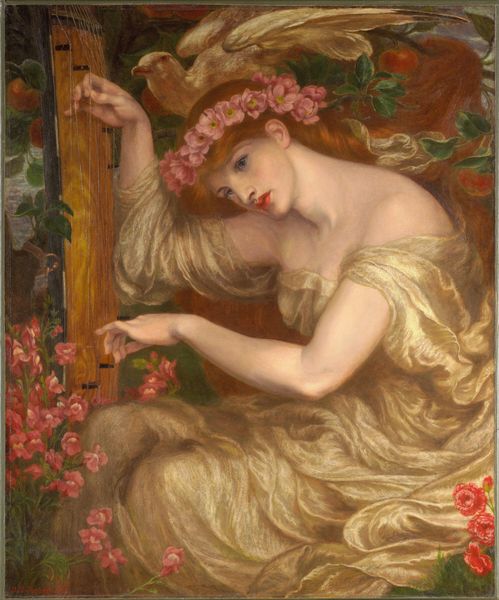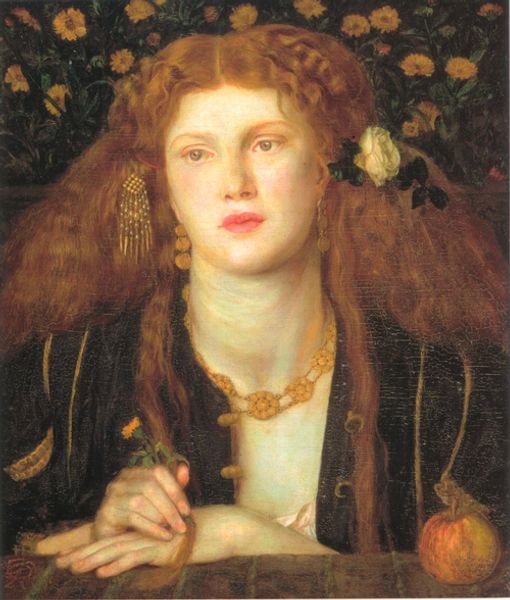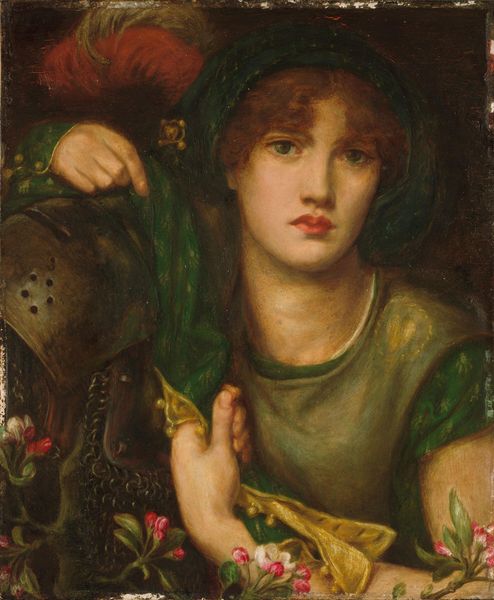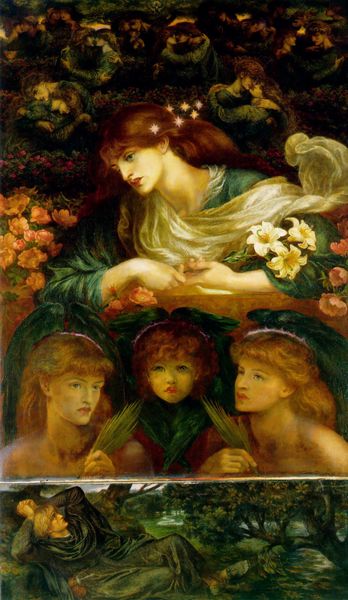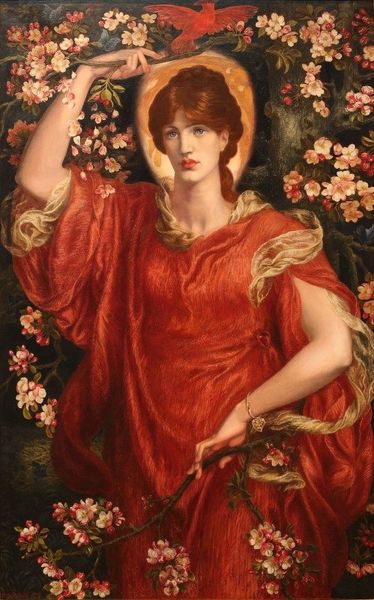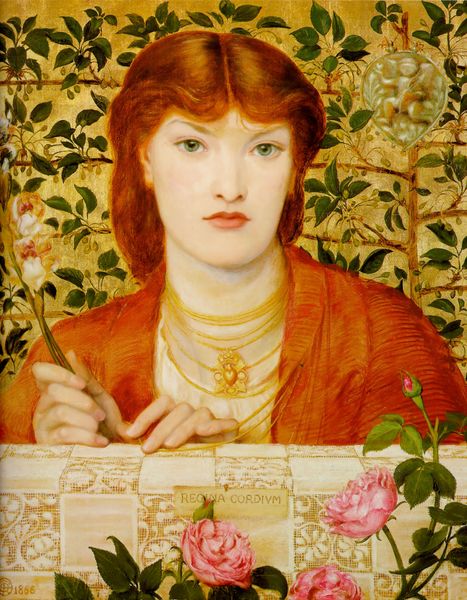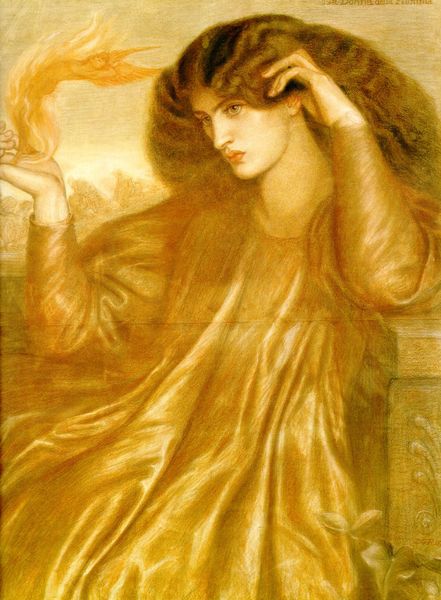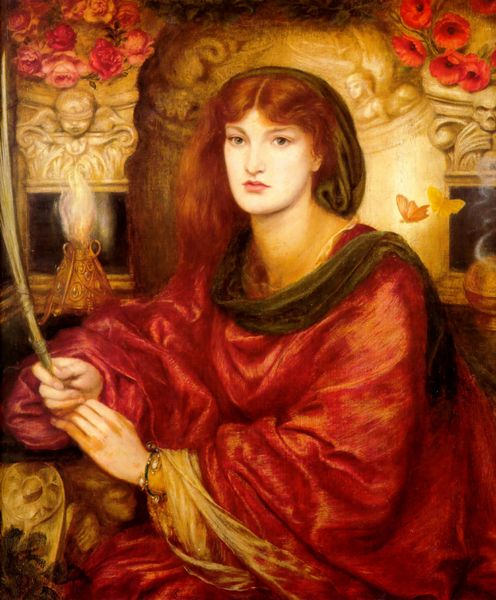
Dimensions: 87.6 x 115.6 cm
Copyright: Public domain
Curator: This piece, titled "The Garland," was completed in 1874 by Dante Gabriel Rossetti, a leading figure in the Pre-Raphaelite movement. He employed oil paints to realize this canvas. Editor: My initial impression is one of quiet melancholy. The vibrant colors—that striking red hair against the emerald dress—are almost overwhelmed by a sense of wistful stillness. Curator: The composition reflects Rossetti’s characteristic focus on female beauty, a staple in Pre-Raphaelite aesthetics, which we can explore in how he constructed and procured his paints. But consider this ideal in contrast to his personal life and relationship with the sitter. Do you see it as simply decorative? Editor: Certainly not solely decorative. While aesthetically pleasing, it begs consideration of the roles of women within 19th-century artistic circles. Was Rossetti interested in genuine representation or was he using women to fulfill something within himself? The garland itself could be interpreted as a symbol of adornment or restriction—literally framing and defining their roles within societal expectations. Curator: Exactly. Let's also examine Rossetti’s process here. The material build-up of the paint, the precise blending of colors… it shows us how labor and craft coalesce. What does it mean to create an object so focused on romanticized beauty at a time when societal structure and artistic expression were in transition? The materials give depth, but so does the broader social narrative in which Rossetti operated. Editor: Yes, understanding that the intense beauty also implies something of that societal power dynamic at play. We are viewing an individual as seen by the artist but equally should attempt to envision her point of view. Her gaze, coupled with the lush greenery, even evokes ideas of fertility, life, or—considering the wistfulness—perhaps a loss thereof. Curator: It leaves you to consider how much these paintings are made up of manufactured visual signifiers, but constructed through genuine human labor. So then, it makes you contemplate these relationships and interactions with a far sharper focus. Editor: Precisely. These complexities, laid bare through artistic intent, historical circumstance, and even raw materiality, allow us, I believe, to challenge preconceptions around beauty, power, and visibility.
Comments
No comments
Be the first to comment and join the conversation on the ultimate creative platform.
